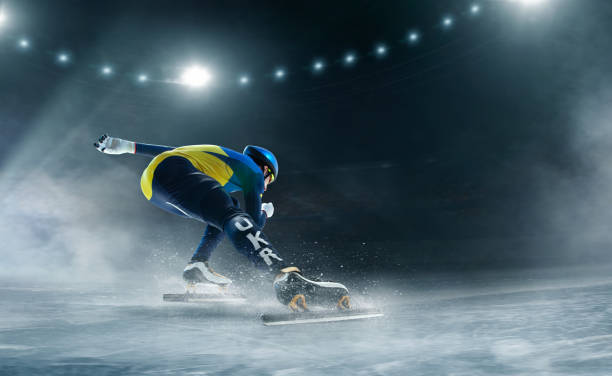The Intricacies of Speed Skating: A Sport That Defies Gravity
Speed skating, a thrilling spectacle of balance, speed, and agility, has captivated audiences worldwide for centuries. This fascinating sport has its roots in Scandinavia and the Netherlands, where inhabitants used skates as a means of transportation across frozen lakes and rivers during winter. Today, it has evolved into a competitive, high-speed sport, with athletes reaching speeds of up to 60 km/h on thin, blade-like skates. In this article, we delve into the dynamic world of speed skating, exploring its history, current trends, and the science behind the sport that defies gravity.

The Historical Tapestry of Speed Skating
The history of speed skating is a rich tapestry woven with innovation, competition, and a constant drive for improvement. Ice skating as a mode of transport dates back to 3000 BC, with the first skates made from polished animal bones. The sport of speed skating as we know it today emerged in 19th-century Netherlands, quickly gaining popularity across Europe and North America. Since its inception, speed skating has undergone numerous changes in technique, equipment, and competition formats, reflecting the sport’s adaptability and resilience.
The Contemporary Scene in Speed Skating
Today, speed skating is a well-established sport, with major competitions held globally, including the Winter Olympics. Modern speed skaters are a testament to the sport’s evolution, demonstrating incredible agility, strength, and endurance. They compete in various distances, from the sprint-like 500m race to the grueling 10,000m marathon of endurance. The sport continues to evolve, with an emphasis on refining techniques, improving equipment, and optimizing training methods.
The Science of Speed Skating
Understanding the science behind speed skating is essential to appreciate this complex sport. Speed skaters achieve impressive speeds due to the unique biomechanics of the sport, which involves a combination of technique, strength, and balance. The thin blade-like skates reduce friction, allowing skaters to glide smoothly on the ice. The crouched position adopted by skaters decreases air resistance, while the powerful push-off motion generates force propelling them forward.
The Training Regimen and Challenges of Speed Skating
Training for speed skating is a demanding process that requires a balance of strength, endurance, and technical proficiency. Athletes engage in a variety of training methods, including on-ice practice, strength training, and aerobic conditioning. Despite the sport’s exhilarating nature, it does present challenges, including the risk of injuries and the physical and mental demands of high-intensity training and competition.
Speed Skating: More Than a Sport
Speed skating is more than a sport—it’s a testament to human ability, a study in physics, and a celebration of resilience and determination. Whether you’re a seasoned athlete, a sports enthusiast, or a casual observer, there’s something to appreciate in the precise movements, the rush of speed, and the sheer determination etched on every skater’s face. As we look to the future, one can only expect speed skating to continue its trajectory of innovation and excitement.
In conclusion, speed skating is a sport that captivates, challenges, and inspires. Its rich history, ongoing evolution, and the intricate science behind it make it a fascinating subject for exploration. As we continue to watch this sport unfold, we are reminded of the remarkable capabilities of the human body and the endless possibilities that lie within the realm of sports.





